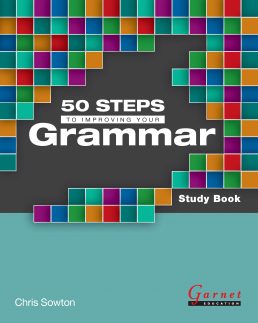
Jim Scrivener, author of Learning Teaching and Teaching English Grammar, was kind enough to let us interview him recently. Here follows our conversation.
Most methodology books are similar in their approach: they are academic, didactic books and are often a chore to read. You clearly took a different approach to teaching methodology in Learning Teaching; how would you describe this difference and the value of this difference?
I wanted it to be different in both content and tone. It was important to me that the content was classroom-experience-driven rather than theory-driven. Most of what is in the book is based on my own teaching experience (and the experience of watching many other teachers in their own classes). I hoped that what I had learnt, discovered or borrowed over the years might also be of use to other teachers.
But I was also keen to find a writing style that allowed me to say “This is what I have done and discovered. Could you use this as a starting point for your own explorations?” I’d read too many books that seemed to be giving me scientifically-proven “correct” ways to do things that either made no sense with my own students or just fell apart in my hands. I wanted to write in a way that made clear that I didn’t have all the answers – but that I had some interesting ideas that could perhaps spark some great answers in the readers themselves.
Learning Teaching is now in its 3rd edition. Why do you think it has been such a popular methodology course for so long?
Whenever people talk to me about the book, it’s almost invariably the tone that they mention first, rather than the content. They say things like “I had to read this on my course! But I loved it!” or “I was expecting a dry, academic, hard to read, boring book – but it felt like a friend taking to me.” I think that when a book is on a booklist for a serious course, people often expect the worst. So, perhaps there’s a sense of surprise and delight that this teaching business isn’t as obscure a mystery as they feared and that they can immediately find a tangible starting point for planning their own lessons.
How has Learning Teaching changed since its first edition?
Well, obviously the content has shifted with evolving ideas – new areas like CLIL, for example – and of course, much more interest in the uses of technology – and also some rethinking on many basic approaches to teaching. But the core argument – that teaching is a live, creative, personal, interpersonal art is still the same. You cannot simply go into class and apply someone else’s dead solutions. They don’t work … because we all live and work in a different context with different people, different problems and so on. But that doesn’t mean that you can’t learn from the experience of others – so long as you find a way to reflect on it and tweak any ideas so that they become appropriate for your classes.
There’s also a basic belief that teaching is important – that there is something that human teachers can do that the pre-programmed “interactive” exercises, tablet computers and expert systems will never be able to do. Defining what that is – the difference a teacher can make – is to do with who we are and how we are as much as it’s about the content we teach. A lot of the book, in all three editions, is trying to show small ways that teaching can inspire people, help people, move people and eventually change lives.
If you could travel back in time and speak to yourself when you were just starting out on your teaching career, what advice would you give yourself?
“There’s no money in teaching. Are you sure you really want to do this?”
(I think I’d still say “yes”; I honestly can’t imagine any other job where I would have had so much fun).






